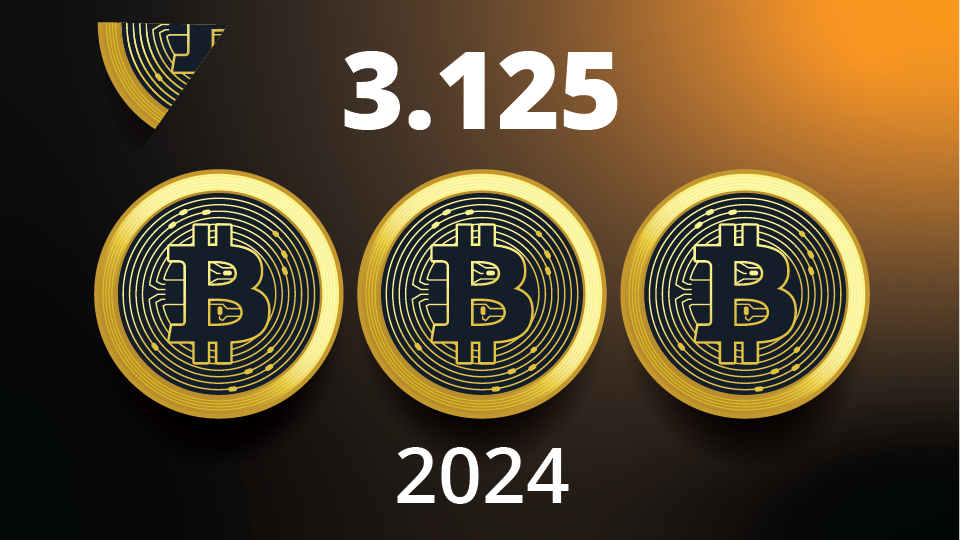Smart Contract and Ethereum Explained: FAQ
October 06, 2022
Read Time 6 MIN
Please note that VanEck may have a position(s) in the digital asset(s) described below.
Builders build during bear markets. Despite a brutal crypto “winter,” Ethereum’s fundamentals are improving as the much–anticipated Ethereum Merge successfully took place in September. This blog is intended to answer some frequently asked questions about Ethereum, smart contracts, and the recent Ethereum Merge.
- What is a smart contract? Why are smart contacts important in crypto?
- How is Bitcoin different than Ethereum?
- What are some smart contract platforms other than Ethereum? What are some differences between them?
- Some popular smart contract platforms
- What are some use case examples of smart contracts?
- What are the implications for Ethereum related to The Merge? Is it a net positive or a negative?
- Smart Contracts & Ethereum: Conclusion and Final Thoughts
What is a smart contract? Why are smart contacts important in crypto?
A smart contract is a protocol that enables two parties to make an agreement without the need for a third party to enforce it. This means that they are self–executing, self–enforcing and tamper–proof. Smart contracts are digital agreements that are executed automatically when certain conditions are met. They can be programmed with logic and business rules, so they can provide more complex functions than just transferring data between parties. Smart contracts are agreed to and executed on the blockchain.
Smart contracts allow for automation, immutability, decentralization and security for nearly all types of transactions. Ethereum is the most widely used smart contract platform and can be used for everything from token creation to NFTs to any kind of decentralized application or community.
It’s important to note that smart contracts are just one category that we have identified out of the broader digital assets opportunity set. Other categories include Infrastructure Applications, Decentralized Finance, and Stablecoins (among others).
8 Categories of Digital Assets
Source: VanEck. Percentages reflect the number of cryptocurrency projects in each category as a share of 385 digital assets under coverage as of 6/30/2022.
How is Bitcoin different than Ethereum?
Bitcoin and Ethereum share many similarities. Both are decentralized digital currencies that can be traded and stored in wallets, and both are also built using blockchain technology. However, there are key differences between the two digital assets that we can identify.
Bitcoin’s primary purpose is to exist as a form of native digital currency. Because of its decentralized nature, Bitcoin is not controlled by any bank or government, but rather by an open–source network that anyone can take part in. Bitcoin offers users access to a potential store of value in an ecosystem outside of the traditional banking system. Ultimately, Bitcoin’s primary use case centers around its potential as a form of digital currency or store of value.
Ethereum is a smart contract platform with all the characteristics that define smart contract platforms (self–executing, self–enforcing and tamper–proof). Ethereum is commonly known as a “world computer” that powers a variety of decentralized applications (dApps) across a range of use cases. Based on current total value locked (TVL) and transaction rates, Ethereum is the world’s largest network for decentralized computing. Compared to Bitcoin, Ethereum’s use cases are much more varied and application–based.
What are some smart contract platforms other than Ethereum? What are some differences between them?
According to the current TVL market share data (see below chart), Ethereum retains its position as the dominant smart contract protocol. However, Ethereum’s success has spawned a number of competing smart contracts, which often differentiate by focusing on areas in which Ethereum struggles at the moment – poor scalability and high transaction fees.
Ethereum Dominates Total Value Locked (TVL) Market Share of Smart Contracts
Source: GoKUStats, VanEck Research as of 9/8/2022.
| Some popular smart contract platforms: | |
| Smart Contract Platform | Description |
| Solana |
|
| Polkadot |
|
| Avalanche |
|
| Cosmos |
|
What are some use case examples of smart contracts?
Smart contracts may be used across a variety of industries, some of which we have outlined below.
Finance – The smart contract–enabled Decentralized Finance (DeFi) ecosystem poses a threat to legacy financial institutions and has spawned innovations within the space such as DEXes and the creation of tokenized assets.
Decentralized Autonomous Organizations (DAOs) – Smart Contracts allow for the existence of DAOs which are community–led entities with no central authority. DAOs are fully autonomous and transparent.
Non–Fungible Tokens (NFTs) – NFTs are minted through smart contracts which confirm ownership and enable NFT transactions. Smart contracts also enable the original creator of the NFT to automatically receive royalties when their asset is resold. The terms of this royalty are determined at the inception of the smart contract agreement and enforced by code.
Supply Chain – Blockchain technology has the potential to make global supply chains more efficient and transparent by providing all parties within a respective supply chain with access to the same information, potentially reducing communication or transfer data errors.
What are the implications for Ethereum related to The Merge? Is it a net positive or a negative?
There are several implications for Ethereum going forward. Although some concerns remain, we believe that the successful completion of The Merge is a net positive for Ethereum and the space as a whole.
Pros:
- The Merge decreases the issuance of Ethereum’s native token Ether (ETH) by close to 90%, potentially introducing deflationary pressure to the token supply which could increase the token’s valuation.
- Transaction fees will accrue to stakers and validators.
- The removal of selling pressure from miners who need to sell to cover their input costs.
- Greatly decreases the amount of energy consumed to run the network. This is potentially important to meet ESG guidelines and high energy usage being a common facet of crypto many deride. Source: VanEck, Dune, Bankless.
Cons:
- Some argue that moving to PoS will be less secure and more centralized as there are a few large entities involved with staking (as shown below). This could potentially lead to governments being more easily able to influence Ethereum at the protocol level as they could regulate a few large entities.
ETH Staking Dominated by a Select Few Entities
Source: Dune as of 9/16/2022.
Smart Contracts & Ethereum: Conclusion and Final Thoughts
Smart contracts are a critical component of the broader digital assets landscape because of the functionality they bring to the blockchain ecosystem. Ethereum is by far the most popular smart contract platform in use today, and Ethereum’s successful completion of the Merge represented a major turning point in how the Ethereum blockchain is validated. On the heels of Ethereum’s success and mass adoption, a number of competitors have also come to market. Smart contracts, including Ethereum and its competitors, offer a wide variety of use cases, ranging from DeFi to NFT applications.
To receive more Digital Assets insights, sign up in our subscription center.
Related Topics
Related Insights
IMPORTANT DISCLOSURES
Coin Definitions
Solana (SOL) is a public blockchain platform. It is open–source and decentralized, with consensus achieved using proof of stake and proof of history. Its internal cryptocurrency is SOL.
Cosmos (ATOM) is a cryptocurrency that powers an ecosystem of blockchains designed to scale and interoperate with each other. The team aims to "create an Internet of Blockchains, a network of blockchains able to communicate with each other in a decentralized way." Cosmos is a proof–of–stake chain. ATOM holders can stake their tokens in order to maintain the network and receive more ATOM as a reward.
Ethereum is a decentralized, open–source blockchain with smart contract functionality. Ether is the native cryptocurrency of the platform. Amongst cryptocurrencies, Ether is second only to Bitcoin in market capitalization.
Polkadot is a sharded heterogeneous multi–chain architecture which enables external networks as well as customized layer one “parachains” to communicate, creating an interconnected internet of blockchains.
Avalanche is an open–source platform for launching decentralized finance applications and enterprise blockchain deployments in one interoperable, scalable ecosystem.
Please note that VanEck may offer investments products that invest in the asset class(es) or industries included herein.
The information herein represents the opinion of the author(s), but not necessarily those of VanEck, and these opinions may change at any time and from time to time. Non–VanEck proprietary information contained herein has been obtained from sources believed to be reliable, but not guaranteed. Not intended to be a forecast of future events, a guarantee of future results or investment advice. Historical performance is not indicative of future results. Current data may differ from data quoted. Any graphs shown herein are for illustrative purposes only.
This is not an offer to buy or sell, or a recommendation to buy or sell any of the cryptocurrencies mentioned herein. The information herein represents the opinion of the author(s), but not necessarily those of VanEck, and these opinions may change at any time. Non–VanEck proprietary information contained herein has been obtained from sources believed to be reliable, but not guaranteed. Not intended to be a forecast of future events, a guarantee of future results or investment advice. Historical performance is not indicative of future results. Current data may differ from data quoted. Any graphs shown herein are for illustrative purposes only.
Cryptocurrency is a digital representation of value that functions as a medium of exchange, a unit of account, or a store of value, but it does not have legal tender status. Cryptocurrencies are sometimes exchanged for U.S. dollars or other currencies around the world, but they are not generally backed or supported by any government or central bank. Their value is completely derived by market forces of supply and demand, and they are more volatile than traditional currencies. The value of cryptocurrency may be derived from the continued willingness of market participants to exchange fiat currency for cryptocurrency, which may result in the potential for permanent and total loss of value of a particular cryptocurrency should the market for that cryptocurrency disappear. Cryptocurrencies are not covered by either FDIC or SIPC insurance. Legislative and regulatory changes or actions at the state, federal, or international level may adversely affect the use, transfer, exchange, and value of cryptocurrency.
Investing in cryptocurrencies comes with a number of risks, including volatile market price swings or flash crashes, market manipulation, and cybersecurity risks. In addition, cryptocurrency markets and exchanges are not regulated with the same controls or customer protections available in equity, option, futures, or foreign exchange investing. There is no assurance that a person who accepts a cryptocurrency as payment today will continue to do so in the future.
Investors should conduct extensive research into the legitimacy of each individual cryptocurrency, including its platform, before investing. The features, functions, characteristics, operation, use and other properties of the specific cryptocurrency may be complex, technical, or difficult to understand or evaluate. The cryptocurrency may be vulnerable to attacks on the security, integrity or operation, including attacks using computing power sufficient to overwhelm the normal operation of the cryptocurrency’s blockchain or other underlying technology. Some cryptocurrency transactions will be deemed to be made when recorded on a public ledger, which is not necessarily the date or time that a transaction may have been initiated.
There may be risks posed by the lack of regulation for cryptocurrencies and any future regulatory developments could affect the viability and expansion of the use of cryptocurrencies. Investors should conduct extensive research before investing in cryptocurrencies.
Information provided by Van Eck is not intended to be, nor should it be construed as financial, tax or legal advice. It is not a recommendation to buy or sell an interest in cryptocurrencies.
All investing is subject to risk, including the possible loss of the money you invest. As with any investment strategy, there is no guarantee that investment objectives will be met and investors may lose money. Diversification does not ensure a profit or protect against a loss in a declining market. Past performance is no guarantee of future results.
© Van Eck Securities Corporation, Distributor, a wholly owned subsidiary of Van Eck Associates Corporation.
Related Funds
IMPORTANT DISCLOSURES
Coin Definitions
Solana (SOL) is a public blockchain platform. It is open–source and decentralized, with consensus achieved using proof of stake and proof of history. Its internal cryptocurrency is SOL.
Cosmos (ATOM) is a cryptocurrency that powers an ecosystem of blockchains designed to scale and interoperate with each other. The team aims to "create an Internet of Blockchains, a network of blockchains able to communicate with each other in a decentralized way." Cosmos is a proof–of–stake chain. ATOM holders can stake their tokens in order to maintain the network and receive more ATOM as a reward.
Ethereum is a decentralized, open–source blockchain with smart contract functionality. Ether is the native cryptocurrency of the platform. Amongst cryptocurrencies, Ether is second only to Bitcoin in market capitalization.
Polkadot is a sharded heterogeneous multi–chain architecture which enables external networks as well as customized layer one “parachains” to communicate, creating an interconnected internet of blockchains.
Avalanche is an open–source platform for launching decentralized finance applications and enterprise blockchain deployments in one interoperable, scalable ecosystem.
Please note that VanEck may offer investments products that invest in the asset class(es) or industries included herein.
The information herein represents the opinion of the author(s), but not necessarily those of VanEck, and these opinions may change at any time and from time to time. Non–VanEck proprietary information contained herein has been obtained from sources believed to be reliable, but not guaranteed. Not intended to be a forecast of future events, a guarantee of future results or investment advice. Historical performance is not indicative of future results. Current data may differ from data quoted. Any graphs shown herein are for illustrative purposes only.
This is not an offer to buy or sell, or a recommendation to buy or sell any of the cryptocurrencies mentioned herein. The information herein represents the opinion of the author(s), but not necessarily those of VanEck, and these opinions may change at any time. Non–VanEck proprietary information contained herein has been obtained from sources believed to be reliable, but not guaranteed. Not intended to be a forecast of future events, a guarantee of future results or investment advice. Historical performance is not indicative of future results. Current data may differ from data quoted. Any graphs shown herein are for illustrative purposes only.
Cryptocurrency is a digital representation of value that functions as a medium of exchange, a unit of account, or a store of value, but it does not have legal tender status. Cryptocurrencies are sometimes exchanged for U.S. dollars or other currencies around the world, but they are not generally backed or supported by any government or central bank. Their value is completely derived by market forces of supply and demand, and they are more volatile than traditional currencies. The value of cryptocurrency may be derived from the continued willingness of market participants to exchange fiat currency for cryptocurrency, which may result in the potential for permanent and total loss of value of a particular cryptocurrency should the market for that cryptocurrency disappear. Cryptocurrencies are not covered by either FDIC or SIPC insurance. Legislative and regulatory changes or actions at the state, federal, or international level may adversely affect the use, transfer, exchange, and value of cryptocurrency.
Investing in cryptocurrencies comes with a number of risks, including volatile market price swings or flash crashes, market manipulation, and cybersecurity risks. In addition, cryptocurrency markets and exchanges are not regulated with the same controls or customer protections available in equity, option, futures, or foreign exchange investing. There is no assurance that a person who accepts a cryptocurrency as payment today will continue to do so in the future.
Investors should conduct extensive research into the legitimacy of each individual cryptocurrency, including its platform, before investing. The features, functions, characteristics, operation, use and other properties of the specific cryptocurrency may be complex, technical, or difficult to understand or evaluate. The cryptocurrency may be vulnerable to attacks on the security, integrity or operation, including attacks using computing power sufficient to overwhelm the normal operation of the cryptocurrency’s blockchain or other underlying technology. Some cryptocurrency transactions will be deemed to be made when recorded on a public ledger, which is not necessarily the date or time that a transaction may have been initiated.
There may be risks posed by the lack of regulation for cryptocurrencies and any future regulatory developments could affect the viability and expansion of the use of cryptocurrencies. Investors should conduct extensive research before investing in cryptocurrencies.
Information provided by Van Eck is not intended to be, nor should it be construed as financial, tax or legal advice. It is not a recommendation to buy or sell an interest in cryptocurrencies.
All investing is subject to risk, including the possible loss of the money you invest. As with any investment strategy, there is no guarantee that investment objectives will be met and investors may lose money. Diversification does not ensure a profit or protect against a loss in a declining market. Past performance is no guarantee of future results.
© Van Eck Securities Corporation, Distributor, a wholly owned subsidiary of Van Eck Associates Corporation.




